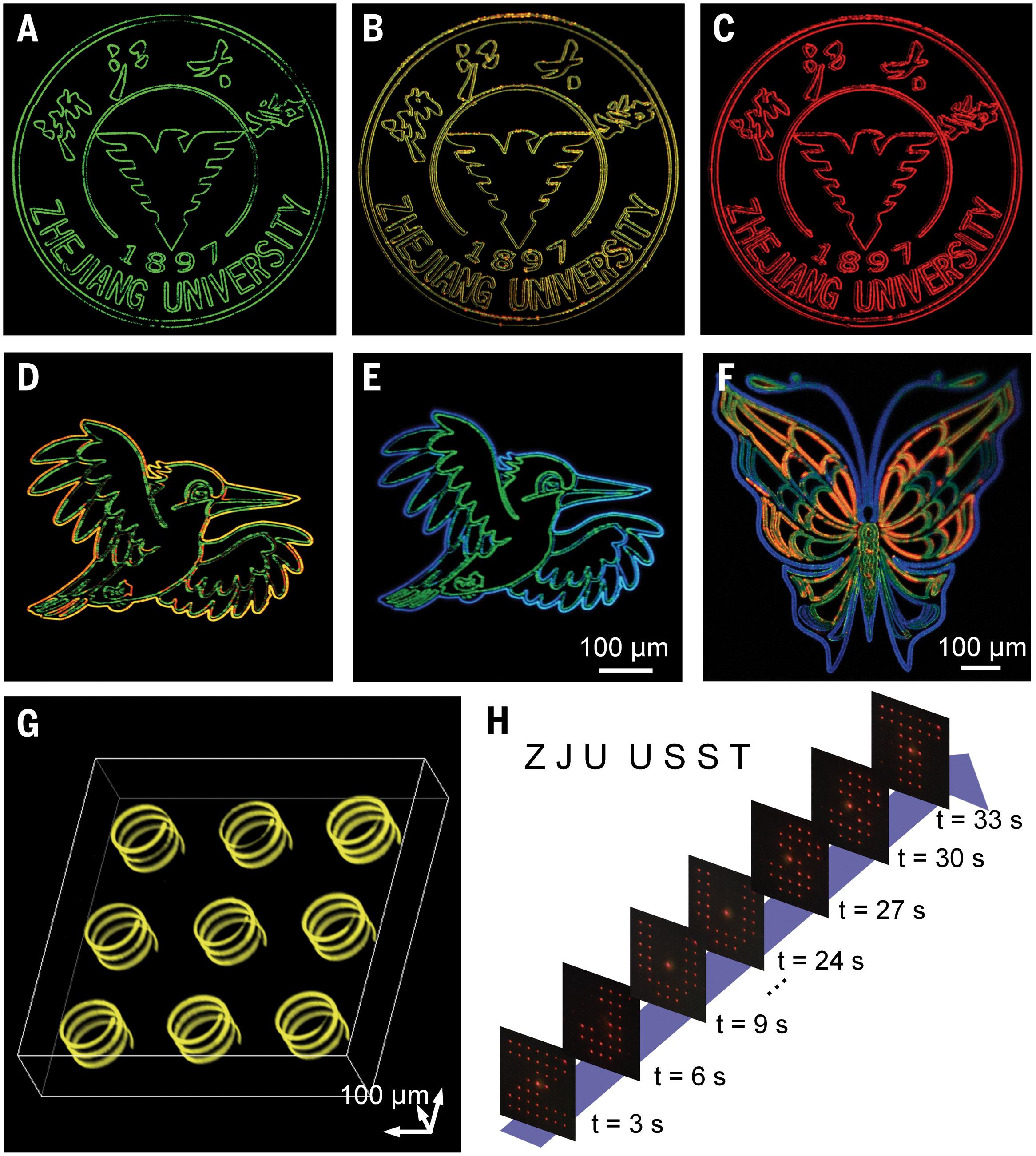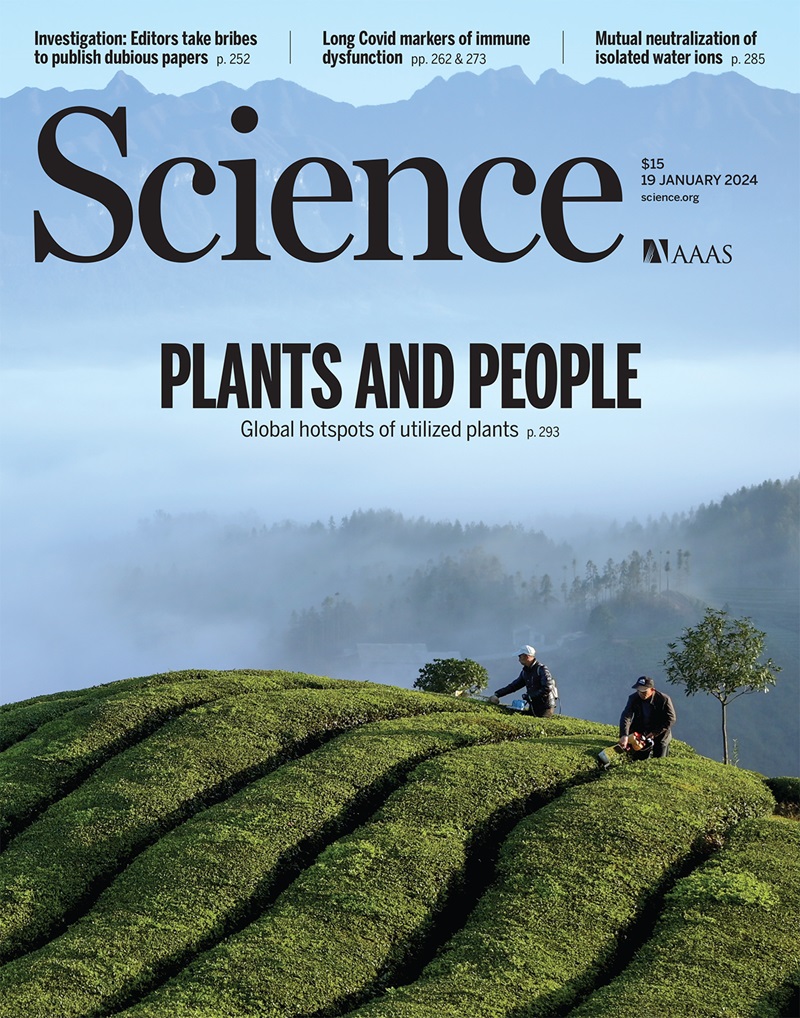Three-dimensional direct lithography of stable perovskite nanocrystals in glass
IF 44.7
1区 综合性期刊
Q1 MULTIDISCIPLINARY SCIENCES
引用次数: 109
Abstract
Material composition engineering and device fabrication of perovskite nanocrystals (PNCs) in solution can introduce organic contamination and entail several synthetic, processing, and stabilization steps. We report three-dimensional (3D) direct lithography of PNCs with tunable composition and bandgap in glass. The halide ion distribution was controlled at the nanoscale with ultrafast laser–induced liquid nanophase separation. The PNCs exhibit notable stability against ultraviolet irradiation, organic solution, and high temperatures (up to 250°C). Printed 3D structures in glass were used for optical storage, micro–light emitting diodes, and holographic displays. The proposed mechanisms of both PNC formation and composition tunability were verified.

玻璃中稳定过氧化物纳米晶体的三维直接光刻技术
溶液中的包光体纳米晶体(PNCs)的材料成分工程和器件制造可能会引入有机污染,并需要多个合成、加工和稳定步骤。我们报告了玻璃中具有可调成分和带隙的 PNC 的三维(3D)直接光刻技术。通过超快激光诱导液态纳米相分离,在纳米尺度上控制了卤化离子的分布。PNC 对紫外线照射、有机溶液和高温(高达 250°C)具有显著的稳定性。打印出的玻璃三维结构可用于光存储、微型发光二极管和全息显示。所提出的 PNC 形成和成分可调机制均得到了验证。
本文章由计算机程序翻译,如有差异,请以英文原文为准。
求助全文
约1分钟内获得全文
求助全文
来源期刊

Science
综合性期刊-综合性期刊
CiteScore
61.10
自引率
0.90%
发文量
0
审稿时长
2.1 months
期刊介绍:
Science is a leading outlet for scientific news, commentary, and cutting-edge research. Through its print and online incarnations, Science reaches an estimated worldwide readership of more than one million. Science’s authorship is global too, and its articles consistently rank among the world's most cited research.
Science serves as a forum for discussion of important issues related to the advancement of science by publishing material on which a consensus has been reached as well as including the presentation of minority or conflicting points of view. Accordingly, all articles published in Science—including editorials, news and comment, and book reviews—are signed and reflect the individual views of the authors and not official points of view adopted by AAAS or the institutions with which the authors are affiliated.
Science seeks to publish those papers that are most influential in their fields or across fields and that will significantly advance scientific understanding. Selected papers should present novel and broadly important data, syntheses, or concepts. They should merit recognition by the wider scientific community and general public provided by publication in Science, beyond that provided by specialty journals. Science welcomes submissions from all fields of science and from any source. The editors are committed to the prompt evaluation and publication of submitted papers while upholding high standards that support reproducibility of published research. Science is published weekly; selected papers are published online ahead of print.
 求助内容:
求助内容: 应助结果提醒方式:
应助结果提醒方式:


